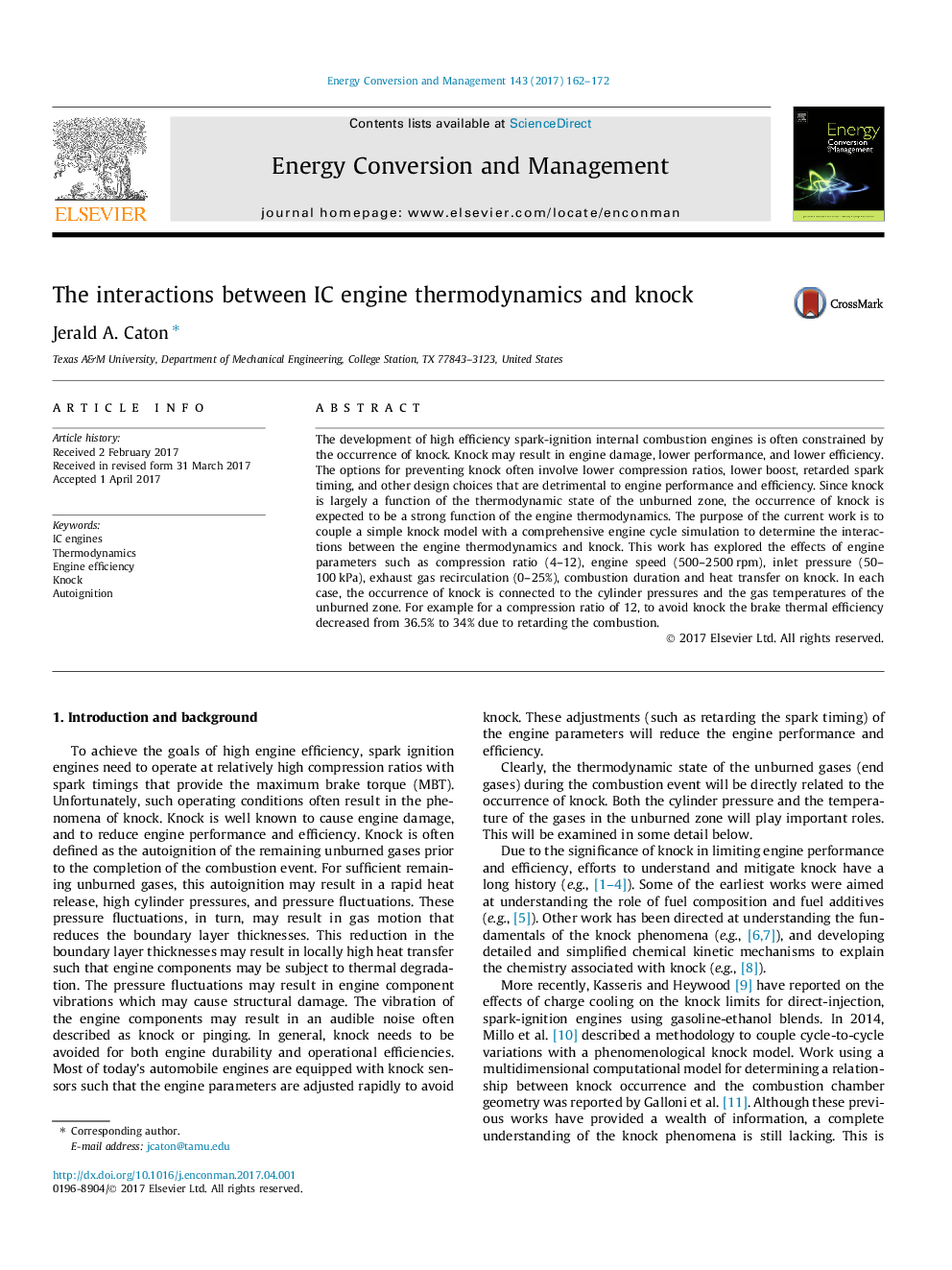| Article ID | Journal | Published Year | Pages | File Type |
|---|---|---|---|---|
| 5012795 | Energy Conversion and Management | 2017 | 11 Pages |
Abstract
The development of high efficiency spark-ignition internal combustion engines is often constrained by the occurrence of knock. Knock may result in engine damage, lower performance, and lower efficiency. The options for preventing knock often involve lower compression ratios, lower boost, retarded spark timing, and other design choices that are detrimental to engine performance and efficiency. Since knock is largely a function of the thermodynamic state of the unburned zone, the occurrence of knock is expected to be a strong function of the engine thermodynamics. The purpose of the current work is to couple a simple knock model with a comprehensive engine cycle simulation to determine the interactions between the engine thermodynamics and knock. This work has explored the effects of engine parameters such as compression ratio (4-12), engine speed (500-2500Â rpm), inlet pressure (50-100Â kPa), exhaust gas recirculation (0-25%), combustion duration and heat transfer on knock. In each case, the occurrence of knock is connected to the cylinder pressures and the gas temperatures of the unburned zone. For example for a compression ratio of 12, to avoid knock the brake thermal efficiency decreased from 36.5% to 34% due to retarding the combustion.
Related Topics
Physical Sciences and Engineering
Energy
Energy (General)
Authors
Jerald A. Caton,
